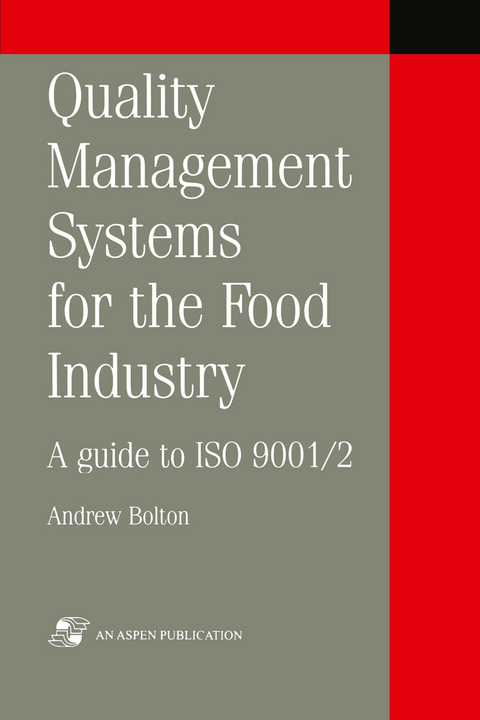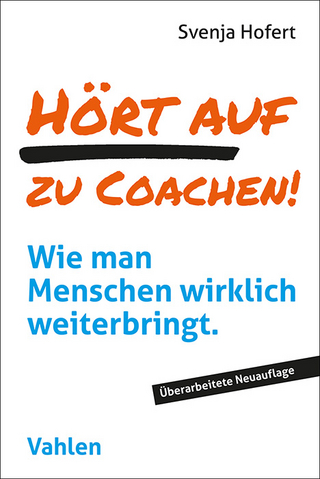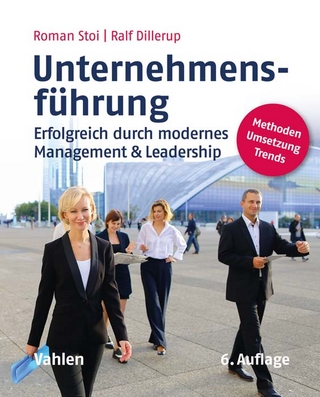
Quality Management Systems for the Food Industry
Springer-Verlag New York Inc.
978-1-4613-7790-0 (ISBN)
1 Introduction.- 1.1 Introduction.- 1.2 The Food Safety Act 1990.- 1.3 The statutory defences — Due Diligence.- 1.4 What is BS EN ISO 9001?.- 1.5 Summary.- 2 Quality management principles — why BS EN ISO 9001?.- 2.1 Quality management principles.- 2.2 What is BS EN ISO 9001?.- 2.3 Results and benefits.- 2.4 The administration of BS EN ISO 9001.- 2.5 Summary.- 3 Preparation for the programme — management commitment.- 3.1 Strategic objective and scope.- 3.2 Is it the right time?.- 3.3 Management commitment and understanding.- 3.4 Management Representative.- 3.5 A consultant or not?.- 3.6 Appointment of assessors.- 3.7 Project costs.- 3.8 Project plan and timescale.- 3.9 Summary.- 4 Management responsibility.- 4.1 Introduction.- 4.2 Quality policy.- 4.3 Responsibility and authority.- 4.4 Management Representative.- 4.5 Management review.- 4.6 Complaint management.- 4.7 Summary.- 5 The quality system and document control.- 5.1 Introduction.- 5.2 The quality policy statement.- 5.3 The quality manual and procedures.- 5.4 The quality plan.- 5.5 The document system.- 5.6 Management of documentation.- 5.7 Computer access and security.- 5.8 Summary.- 6 Buying and selling — purchasing and contract review.- 6.1 Introduction.- 6.2 Purchasing.- 6.3 Contract review.- 6.4 Summary.- 7 Design and development.- 7.1 Introduction.- 7.2 Project plan.- 7.3 Project management plan.- 7.4 Design documentation.- 7.5 Design specifications.- 7.6 Summary.- 8 Process control.- 8.1 Introduction.- 8.2 Planning.- 8.3 Specification and controls.- 8.4 Dress and hygiene.- 8.5 Special processes.- 8.6 Cleaning.- 8.7 Nonconforming product.- 8.8 Work in progress.- 8.9 Waste management.- 8.10 Customer-supplied product.- 8.11 Handling, storage, packaging, preservation and delivery.- 8.12 Productidentification and traceability.- 8.13 Pest control.- 8.14 Corrective and preventive action.- 8.15 Production trials.- 8.16 Quality records.- 8.17 Summary.- 9 Inspection, measuring and testing — calibration.- 9.1 Introduction.- 9.2 Inspection and testing.- 9.3 Control of inspection, measuring and test equipment — calibration.- 9.4 Inspection and test status.- 9.5 Summary.- 10 Internal quality audit.- 10.1 Introduction.- 10.2 Internal audit procedure.- 10.3 The audit schedule.- 10.4 Selection and training of auditors.- 10.5 Preparation of the auditees.- 10.6 The internal audit training programme.- 10.7 Company awareness.- 10.8 Summary.- 11 Training.- 11.1 Introduction.- 11.2 Induction training.- 11.3 Job descriptions/work instructions.- 11.4 General training.- 11.5 Personal records.- 11.6 Summary.- 12 The assessment process.- 12.1 Introduction.- 12.2 Appointment of assessors.- 12.3 Document review.- 12.4 The assessment.- 12.5 Surveillance visits.- 12.6 Summary.- 13 Achievement of the standard — what next?.- 13.1 Introduction.- 13.2 Total quality management.- 13.3 Performance indices and quality costs.- 13.4 Quality improvement teams and quality circles.- 13.5 Quality tools.- 13.6 The cult of continuous improvement.- 14 Other accreditation/certification systems.- 14.1 Introduction.- 14.2 Industry schemes.- 14.3 National and international schemes.- 14.4 Guidelines and codes of practice.- 14.5 Codex Alimentarius.- 14.6 Confidence marks.- 14.7 Distributors’ own brands and contracts.- 14.8 In conclusion.- 14.9 Contact addresses.- Appendix A Model quality manual: QFS Quality Food Services.- Appendix B Accredited third-party certification bodies.- Appendix C Guidance notes for the application of BS EN ISO 9001:1994 for the food and drink industry.- Appendix D Guidancenotes for the application of ISO 9002/EN2900/BS 5750: Part 2 To the hotel and catering industry.- Appendix E New Zealand Q-Base code: quality management systems for small and medium-sized enterprises — general requirements TB 004:1995.- Appendix F Glossary.- References.
| Zusatzinfo | XI, 193 p. |
|---|---|
| Verlagsort | New York, NY |
| Sprache | englisch |
| Maße | 155 x 235 mm |
| Themenwelt | Technik ► Lebensmitteltechnologie |
| Wirtschaft ► Betriebswirtschaft / Management ► Unternehmensführung / Management | |
| ISBN-10 | 1-4613-7790-0 / 1461377900 |
| ISBN-13 | 978-1-4613-7790-0 / 9781461377900 |
| Zustand | Neuware |
| Haben Sie eine Frage zum Produkt? |
aus dem Bereich


